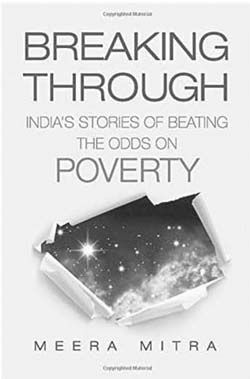This book is the author’s attempt to make her reader experi-ence diverse aspects of the lives of the ‘poor’ in this country. Without going into the complexity of defining a phenomenon as massive as poverty, the author has simply taken the reader through journeys of people from various parts of India in their quest of the basics.
The book is broadly classified into eight categories: shelter, health, education, livelihood inclusion, governance, livelihood exclusion, finance and new collectives. Under each of these segments, stories of people from some part of the country and their transitions in life or their life in India have been detailed. Stories of Orphan Neel becoming a house-owner in the capital and Dalits—Hatti Ram, Bijender and Kishore successfully experimenting with their skills of entrepreneurship against the odds in society speak of the opportunities created by people at the bottom of the pyramid to explore better living conditions for their own selves. Stories of Ghanshyam and Nazma, on the other end, study their response to the changes in conditions and opportunities around them—the impact of a Reliance Fresh on a nearby vegetable vendor Ghanshyam, and the opportunity that Nazma sees in vouchers for education in a private school. Every story revolves around one or more characters and uses their experiences to study the status quo and the opportunities in the concerned area.
Evaluating the evidence used in each of the stories, the author has been cautious in quoting the words of the people she studied and her own interpretations, allowing the reader to have their viewpoint on evidence collected and inferences incurred. Quotations used all through the book highlight the gravity and the simplicty of opinions from people surveyed. ‘Jo apne se neeche hai usko dekh ke jeevan chalaao’ (Lead your life by observing those who are below you) is one such one liner used by Kamlesh, a character in one of the chapters explaining an opinion of her family on the TV set she bought for her kids when the family was not able to afford two decent meals a day.
The arguments put forth by the author poses some critical questions on the ground and for the policy in each scenario. The author has not just looked at an issue but has rather taken the reader through the journey, researched on certain emerging concerns and has raised questions in the process. In one of the chapters on ‘Governance: Reimagining Gender and Caste’, the author points out that the land identification system of revenue departments are archaic because large areas of redistribution are demarcated but individual plots farmed by the poor and the tribals are not. She brings this fact to light in the chapter in which her main character, Sanjo and her family struggle to claim their own land from the upper caste of the area. It is an art to capture the diversity of the subject on the ground without shifting the focus on core issues, gender and caste in this case.

